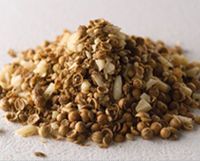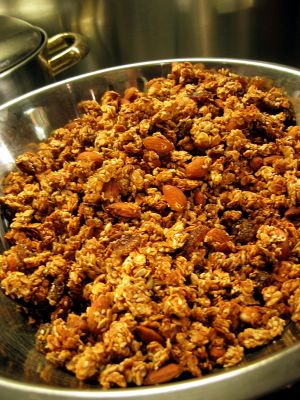Rack of Lamb

Another roast lamb dish for this meat-hungry Australian. This time a small rack of lamb coated with a delicious mustardy, herby marinating paste courtesy of Stephanie Alexander, roasted until tender and juicy within, and crispy and crunchy without.
I found Stephanie's cooking times for an individual lamb rack portion to be way off, though. She recommended 15 minutes at 220C for a portion of 4 cutlets, and 20 minutes for a double rack (8 cutlets). However, after 20 minutes in my hot oven my 3 cutlet portion was still blue. Totally raw - not a cooked part anywhere! It took another 20 minutes, and my meat was still a little too rare for my liking; and I'm a girl who loves my meat rare! Hmmm.
But if her timings were off, her lamb marinade recipe was a winner. This is a really quick and easy recipe that would be very effective to dress up an otherwise plain piece of lamb. It's savoury, salty and silky smooth; and just thick enough to form a perfect crust on the lamb as it cooks. Highly recommended!
Read on for the recipe:
Marinating Paste for Lamb
This paste is sufficient for marinating a leg of lamb, a whole loin or 8 thick chops.
3 tablespoons Dijon mustard
1 tablespoon light soy sauce
1 tablespoon plain flour
1 tablespoon olive oil
1 teaspoon finely chopped fresh rosemary
freshly ground black pepper
Mix all ingredients together and smear liberally over meat. Roast or grill as usual (if grilling, allow surface to sear and seal well before attempting to turn it). The paste will cook to a dark crust.
Continue reading





























